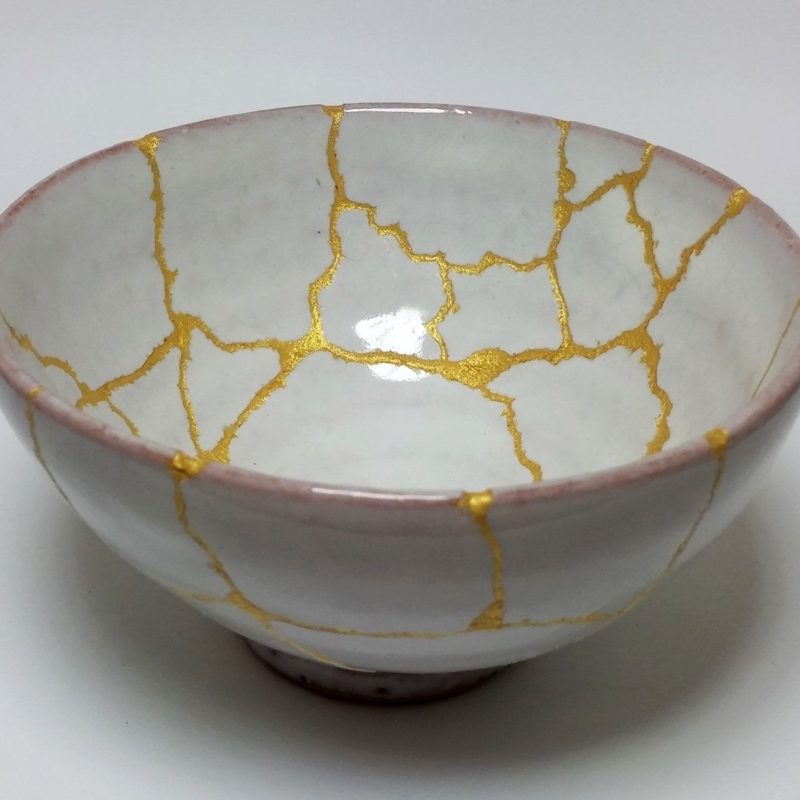by: Norita Yoder
On the night of January 21, 1525, the bite of wind might have seemed especially cold as it whipped down the cobblestone street of Neustadtgasse that lay directly behind the Grossmünster Church in Zurich, Switzerland. Footsteps, muffled by the snow that piled up and tightened already narrow passageways, could be heard if an observer listened carefully on this night. Shadows slid, quiet, down streets hemmed in by walls of concrete houses that ran, connected, in a mismatched row. It was difficult to tell, in the darkness, where one house ended and another began. The night sky was visible somewhere high above the jagged line of rooftops if you looked directly up. The sun had long set behind the Swiss Alps when the figures slipped through a door, most likely opened by a woman.
While many of us have heard the names Felix Manz, George Blaurock, and Conrad Grebel, it was most likely a woman who opened the door to fifteen or more of her son’s friends and acquaintances on the night of January 21, 1525. We don’t know what this woman looked like, but we know that she was an extraordinarily courageous woman with sons that followed in her footsteps. She was Felix Manz’s mother, and it is recorded that the first re-baptism occurred in her home on this night.
It was with certainty not the first time these guests slipped through her door, but on this night, the events of the day created an angst that was palpable. What lay behind them was a disappointment so great it pressed them to their knees and into anguished prayers for guidance for what lay ahead. The atmosphere filled with a sacred energy, a commitment so resolute it could only have been born in the furnace of affliction, then shaped on the forge of surrender by a God in whom they were willing to stake their lives. This small group of people possessed a faith deep enough that their actions would shake the known world. The effects would ripple across all of Europe for centuries to come; it would change the church, the government, and the world as it had been for 1200 years.
- A light to the lost.
- A woman and children watch over a sick family member.
- Men and women watch a baptism.
The events leading up to this night were planted in the soil of greater reforms taking place throughout all of Europe. People were wearied. The first wave of the bubonic plague had spread through Europe between 1348 and 1352 and killed upwards of 60 percent of the population in some cities. Waves of the disease, spread by fleas and rats, continued to break out in Europe up through the 1800s. Additionally, wars ravaged the people and the lands, causing even more abject poverty and death. The church, closely aligned to the state for 1,500 years and with its own army, had grown corrupt and no longer cared about the poverty or well-being of the people.
By the 1500s, disease and death, wars and poverty, along with the rapid spread of ideas made possible by the printing press, had prepared Europe for sweeping change. In 1519, Martin Luther nailed his ninety-five theses to the church door in Wittenberg, Germany. In Zurich, Switzerland, a young priest by the name of Ulrich Zwingli became minister at the Grossmünster Church, a prominent position for someone so young. He was highly educated and an enthusiastic supporter of Luther’s reforms in Germany. By 1523, Zwingli, along with the Zurich City Council, broke from Rome. The City Council of Zurich seemed devoted to their young Zwingli, and he to them.
As was typical of large churches of the time, Grossmünster Church was also a University, and the young minister Ulrich Zwingli, the teacher. Surrounding Zwingli were some of the brightest students in all of Europe. Included in this circle were three young men: George Blaurock, Conrad Grebel, and Felix Manz, whose father was also a priest of some order at the Grossmünster.
In the years following Zwingli’s appointment as minister of the Grossmünster, he and his group of students pushed for reforms such as removing statutes from the church and permitting priests to marry. In these reforms, the Zurich City Council stood with Zwingli and his students. But like all energetic and zealous youth, Zwingli’s students wanted to carry out to the most logical end what Zwingli was willing to take so far only if the Zurich City Council stood with him.
In Germany, when Martin Luther dared—as others had before him—to speak out against the corruption in the church, he made his arguments based on what he termed sola scriptura, or “scripture alone.” In Switzerland, Zwingli and his students followed this same approach of sola scriptura to push for reforms in Zurich. This was a break from the teachings of the established Church, which taught that decisions were to be made by the Church leaders who were qualified to interpret scripture, since they were trained in the original Biblical languages of Hebrew and Greek, in addition to Latin.
This new movement of sola scriptura and reading the scripture in the common vernacular gave rise to individuals meeting in groups for Bible studies, something Zwingli encouraged for his young students. As people met together, new ideas blew a fresh wind of hope across Europe and into the masses of people. They began to see that the drudgery, poverty, and oppression that ruled their lives could be changed. A favorite meeting place for these Bible studies was the home of Felix’s mother.
It is significant that records tell us the first re-baptism took place “in the home of Felix Manz’s mother.” Since Felix Manz’s father was also a minister at the Grossmünster, he was not permitted to marry but could have a mistress. Such was Felix Manz’s mother. That her home was situated near the Grossmünster and Felix was a young student of Zwingli’s indicates they lived much as a family and were a part of the aristocracy of Zurich. While the reforms—which included permitting priests to marry—understandably impacted Felix and his siblings, they affected their mother most of all.
These private Bible studies began in earnest in the fall of 1523, when the group of young students realized Zwingli would not part ways with the City Council on other matters, thus betraying his own belief in sola scriptura. It was in these Bible study groups that a deep conviction began growing; a belief that the church of Christ was made up of adults who voluntarily chose to follow Him and baptism was the act demonstrating their faith. This stood in direct contrast to the practice of infant baptism, which automatically made a person a church member and citizen of the state, liable for paying taxes.
Believer’s baptism was an upset of a societal system in place for 1,200 years. It reached back to the first 300 years of Christianity when those who followed Christ refused to mix church and state, saying Jesus was their King. Initially, Zwingli sided with his students on this matter. However, when the City Council refused to support a church completely separate from the state and civil authorities, Zwingli chose the protection of the City Council over his students and reforms.
It was announced that a final debate was to be held in January of 1525 concerning the matter of baptizing infants. Although there were frictions and indications that a ruling would not be favorable for the young group, still, there was hope in their hearts. On January 21, 1525, the final day of debate, the Council ruled that all infants not yet baptized were to be baptized within a week, and the issue was to no longer be spoken of. As people dispersed from the meeting, a whisper must have gone around to meet at the house of Felix’s mother. As they slipped through her now-familiar door, their hope had turned to anguish and so they knelt and prayed to “God in heaven….that he would give to them his divine will and that he would show his mercy unto them.”[1] This was not done lightly, “For flesh and blood and human forwardness did not drive them, since they well knew what they would have to suffer on account of it.”[2] At some point in the evening, George Blaurock fell to his knees, requesting to be baptized on the confession of his faith in Christ. It is believed that the remainder of those present then also were baptized.
This first re-baptism happened in the home of a woman who loved her children and raised them as something of a single parent, who opened her home and heart to those who wanted to study God’s word, and who chose the ultimate sacrifice in following God. Two years later, she stood with a second son on the bank of the Limmat River that flows through Zurich in the shadow of the Grossmünster and called out encouragement to her son Felix while she watched him be drowned. He died for the convictions that had grown in their hearts through the study of scripture in her home, and the decision they had made to follow Christ wholeheartedly that January night.

_ _ _ _ _
If you wish to hear more historical stories like this please call or visit the Amish & Mennonite Heritage Center. We offer guided tours of “Behalt” – a 10 ft. x 265 ft. cyclorama oil-on-canvas painting that illustrates the heritage of the Amish and Mennonite people from their Anabaptist beginnings in Zurich, Switzerland, to the present day. Behalt means “to keep” or “remember.” We are open Mon-Sat 9:00-5:00 and are located near Berlin, you can find us at 5798 County Road 77, Millersburg, OH 44654. Please call (330) 893-3192 for more information or to schedule a day or evening group tour.







